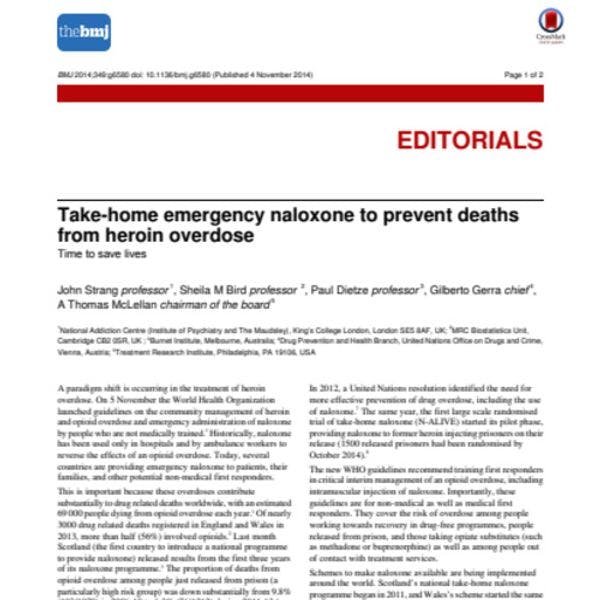Take-home emergency naloxone to prevent deaths from heroin overdose
A paradigm shift is occurring in the treatment of heroin overdose. On 5 November the World Health Organization launched guidelines on the community management of heroin and opioid overdose and emergency administration of naloxone by people who are not medically trained. Historically, naloxone has been used only in hospitals and by ambulance workers to reverse the effects of an opioid overdose. Today, several countries are providing emergency naloxone to patients, their families, and other potential non-medical first responders.
In 2012, a United Nations resolution identified the need for more effective prevention of drug overdose, including the use of naloxone. The same year, the first large scale randomised trial of take-home naloxone (N-ALIVE) started its pilot phase, providing naloxone to former heroin injecting prisoners on their release (1500 released prisoners had been randomised by October 2014).
The new WHO guidelines recommend training first responders in critical interim management of an opioid overdose, including intramuscular injection of naloxone. Importantly, these guidelines are for non-medical as well as medical first responders. They cover the risk of overdose among people working towards recovery in drug-free programmes, people released from prison, and those taking opiate substitutes (such as methadone or buprenorphine) as well as among people out of contact with treatment services.
Keep up-to-date with drug policy developments by subscribing to the IDPC Monthly Alert.
Downloads
Topics
Regions
Related Profiles
- British Medical Journal
